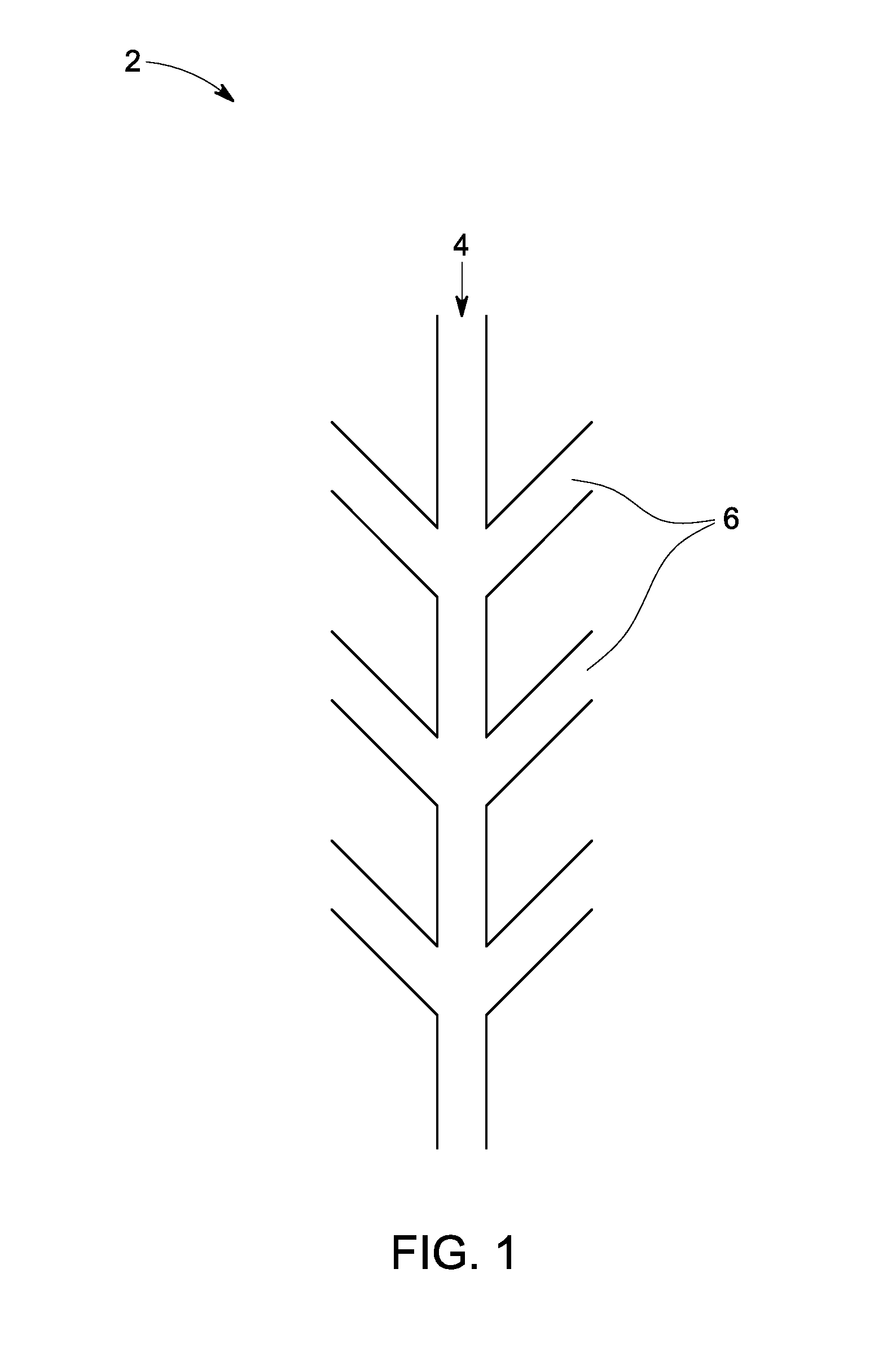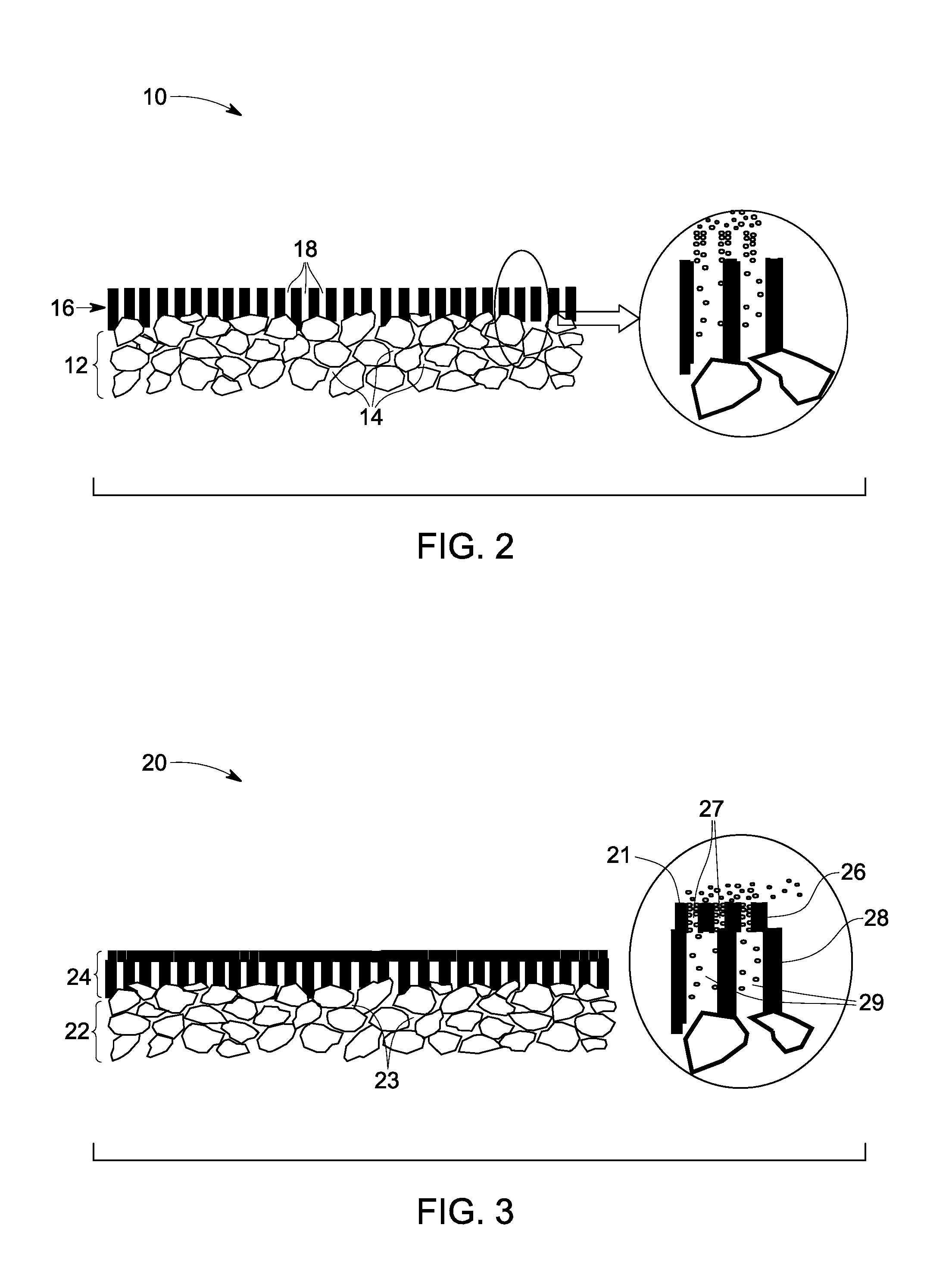Membrane structure and method of making
a membrane structure and membrane technology, applied in the field of membrane structures, can solve the problems of high flux, high selectivity, and difficult to get a defect-free interface between layers, and achieve the effect of high selectivity and high flux
- Summary
- Abstract
- Description
- Claims
- Application Information
AI Technical Summary
Benefits of technology
Problems solved by technology
Method used
Image
Examples
example 1
Method for Fabricating a Membrane Structure of Anodized Alumina on a Porous Polyethersulphone Support Layer
[0068]A continuous aluminum coating of thickness of about 1 micrometer was deposited on a porous polyethersulfone support. Polyethersulfone support layer has an average pore size of about 0.22 micrometers. The aluminum surface was masked with a lacquer mask and then anodized through the porous support. Anodization was done in 0.3 M oxalic acid at voltages greater than 20 V. The anodized alumina pore diameter was controlled, in large part, by the anodization voltage. The anodized alumina layer thickness was determined by anodization time. Once the anodized alumina layer was of the desired thickness, anodization was stopped. The polyethersulfone membrane was protected, the lacquer mask was dissolved with a suitable solvent, and the remaining unconverted aluminum was etched using a copper chloride solution. Finally, a barrier oxide layer was etched away using 5 wt % phosphoric aci...
example 2
Method for Fabricating a Membrane Structure of Asymmetric Anodized Alumina on a Porous Polyethersulfone Support Layer
[0069]A continuous aluminum coating of thickness in the range of 1 micrometer to 2 micrometers was deposited, by evaporation, on a porous polyethersulfone support. The aluminum surface was masked with lacquer, and then anodized through the porous support. Anodization was conducted in oxalic acid at voltages greater than 20 V, as described above. Once the anodized alumina layer was of the desired thickness, anodization voltage is decreased to generate a porous sublayer with finer pores than those of the layer formed at 20V. Multiple alumina sublayers with decreasing pore size was fabricated by sequential reduction in anodization voltage. Any remaining aluminum was etched using a copper chloride solution. Finally, the barrier oxide layer was etched away using 5 wt % phosphoric acid to reveal the top surface of the porous alumina layer.
PUM
| Property | Measurement | Unit |
|---|---|---|
| porosity volume fraction | aaaaa | aaaaa |
| porosity volume fraction | aaaaa | aaaaa |
| porosity volume fraction | aaaaa | aaaaa |
Abstract
Description
Claims
Application Information
 Login to View More
Login to View More - R&D
- Intellectual Property
- Life Sciences
- Materials
- Tech Scout
- Unparalleled Data Quality
- Higher Quality Content
- 60% Fewer Hallucinations
Browse by: Latest US Patents, China's latest patents, Technical Efficacy Thesaurus, Application Domain, Technology Topic, Popular Technical Reports.
© 2025 PatSnap. All rights reserved.Legal|Privacy policy|Modern Slavery Act Transparency Statement|Sitemap|About US| Contact US: help@patsnap.com



